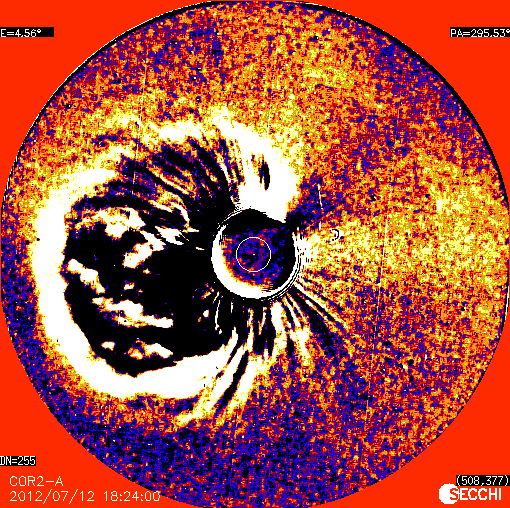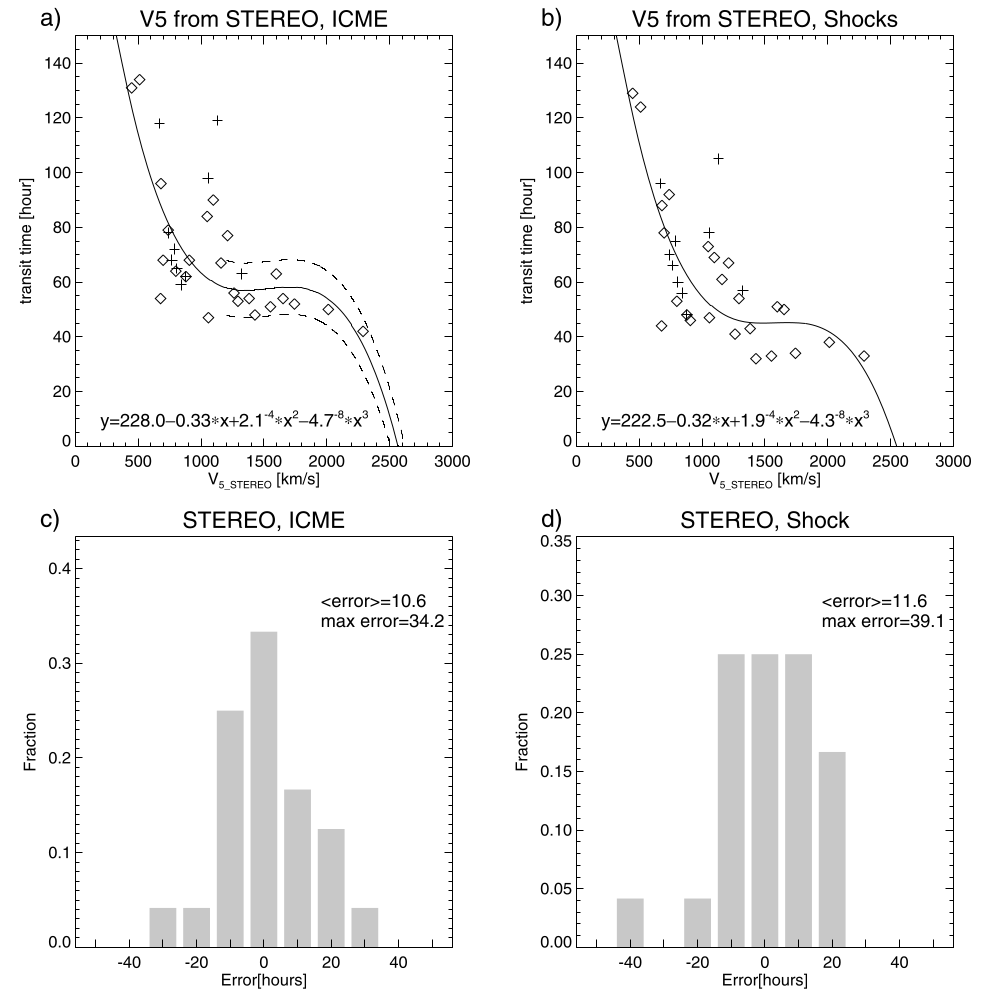Astronomy Object of the Month: 2019, October
< previous Archive next >
Estimation of Arrival Time of Coronal Mass Ejections in the vicinity of the Earth
The arrival time of coronal mass ejections (CMEs) in the vicinity of the Earth
is one of the most important parameters in determining space weather. An accurate model for
prediction of travel time (TT) of CMEs directed towards Earth is important as they cause intense
geomagnetic disturbances. Our study provides prediction model with lesser errors compared to
previous methods. In addition this gives us a better understanding of the kinematics of CMEs.
 Figure 1: Solar TErrestrial RElations Observatory (STEREO) image of Coronal Mass Ejection.
Credit: STEREO.
Figure 1: Solar TErrestrial RElations Observatory (STEREO) image of Coronal Mass Ejection.
Credit: STEREO.
The CMEs are large-scale eruptions of plasma and magnetic field from the Sun. These play an important role in controlling space weather, which can generate intensive geomagnetic disturbances on the Earth. They are known to produce beautiful auroras, as well as, cause major power disruptions (Carrington event, 1859) during intense geomagnetic storm.
These powerful clouds of ionized gases bound by magnetic field can travel at average speeds of 150 – 1050 km/s, observed near the Sun. If directed towards the Earth (Halo or partial-halo CMEs), they can interact with Earth’s magnetic field and cause geomagnetic disturbances. For geomagnetic- storm forecasting it is crucial to predict when a solar disturbance would reach the Earth. This is not an easy task because the rate of expansion of ejections depend on the magnetic force that drives them and the conditions prevailing in the interplanetary medium. In addition, the ejection velocity can change rapidly as a result of CME–CME interactions.
SOlar and Heliospheric Observatory (SOHO) and Solar TErrestrial RElations Observatory (STEREO) spacecrafts have been dedicated to study the Sun since 1995 and 2006, respectively. Onboard, the instruments SOHO/Large Angle and Spectrometric Coronagraphs (LASCO) and STEREO/Sun Earth Connection Coronal and Heliospheric Investigation (SECCHI) coronagraphs were used in our study. The solar cycle shows the 11-year variation of Sun’s magnetic field, which influences the rate and intensity of CMEs produced. We focus on halo and partial-halo CMEs during the ascending phase of Solar Cycle 24, i.e., 2009 – 2013.
CMEs typically reach the Earth 1-6 days after eruption. In figure 2 we show the relation between maximum velocity of CME and the TT for interplanetary coronal mass ejections (ICMEs) and interplanetary shocks (IPs). The figure tells us the time taken by a CME of a particular maximum velocity to reach the Earth. Our approach of using maximum velocity of the CME to predict TT offers reduced errors compared to previous studies. The model presented can be used universally. In addition, the STEREO observations are more accurate in determining the TT as the field of view is much larger than the SOHO field of view, it allows us to follow the CME up to one third of the way to the Earth and thus the determine their speed is more accurate.
 Figure 2: Relationship between the maximal CME
speed obtained from the STEREO images and the observed TT for ICME (Panel a) and IP shock (Panel b). Open
diamond symbols are for non-interacting and star symbols are for interacting CMEs, respectively. The
third-order polynomial relationship between the observed TT and the speed is indicated by a dashed curve.
Two additional dashed lines illustrate deviation from the model of ± 10 hours. The distributions of errors
between predicted and observed TTs are presented in the bottom panels (Panel c for ICME and Panel d for IP
shock). The values of the average and maximal errors are presented in the panels. Credit: A. Ravishankar.
Figure 2: Relationship between the maximal CME
speed obtained from the STEREO images and the observed TT for ICME (Panel a) and IP shock (Panel b). Open
diamond symbols are for non-interacting and star symbols are for interacting CMEs, respectively. The
third-order polynomial relationship between the observed TT and the speed is indicated by a dashed curve.
Two additional dashed lines illustrate deviation from the model of ± 10 hours. The distributions of errors
between predicted and observed TTs are presented in the bottom panels (Panel c for ICME and Panel d for IP
shock). The values of the average and maximal errors are presented in the panels. Credit: A. Ravishankar.
Original publication: Estimation of Arrival Time of Coronal Mass Ejections in the Vicinity of the Earth Using SOlar and Heliospheric Observatory and Solar TErrestrial RElations Observatory Observations, Ravishankar, Anitha; Michałek, Grzegorz; Solar Physics, (2019) 294: 125.
The research was conducted at the Department of High Energy Astrophysics of the Jagiellonian University’s Astronomical Observatory (OAUJ). The work was supported by the Polish National Science Centre through the grant UMO-2017/25/B/ST9/00536.
|
Anitha Ravishankar Astronomical Observatory Jagiellonian University Anitha.Ravishankar [at] uj.edu.pl |


